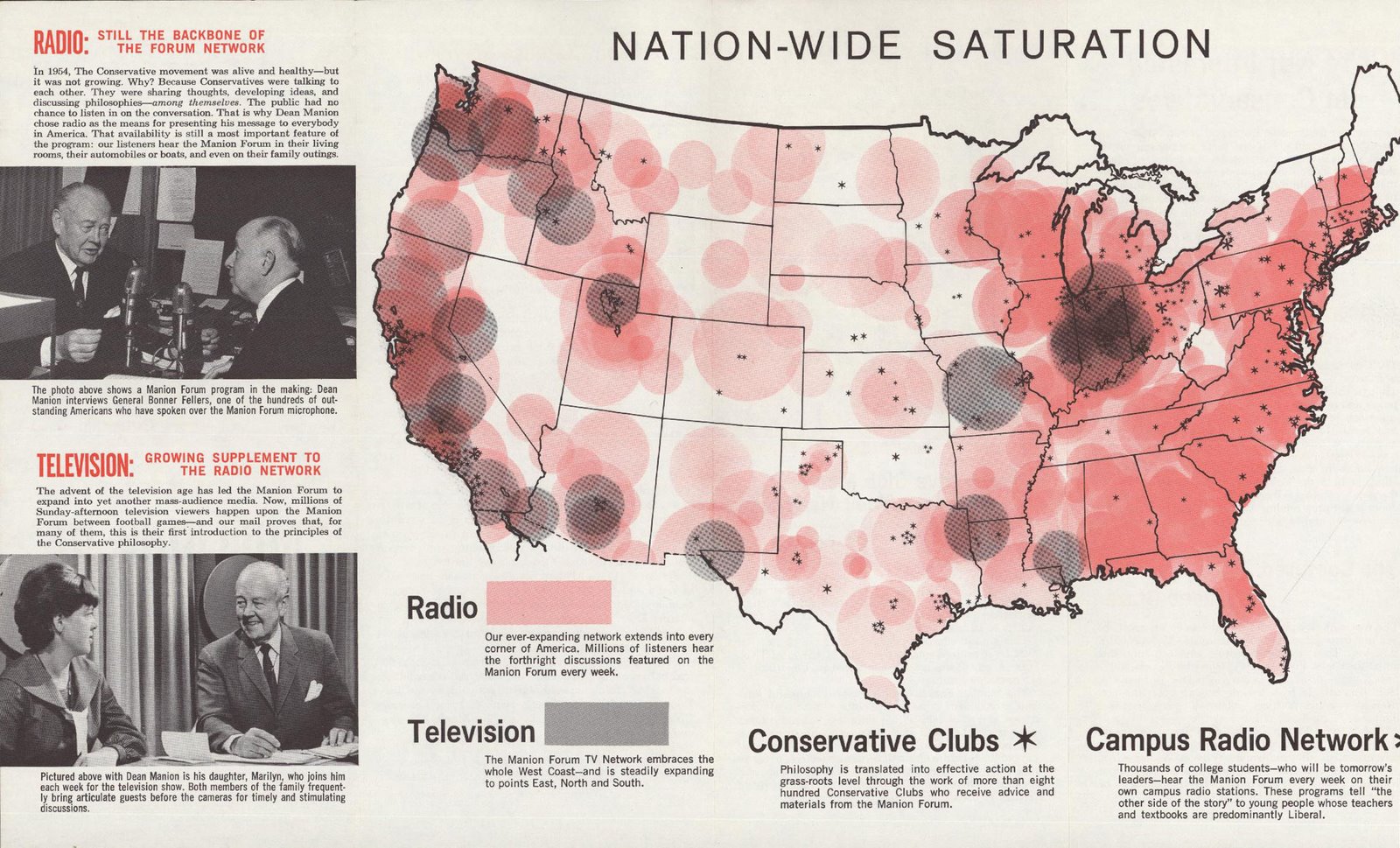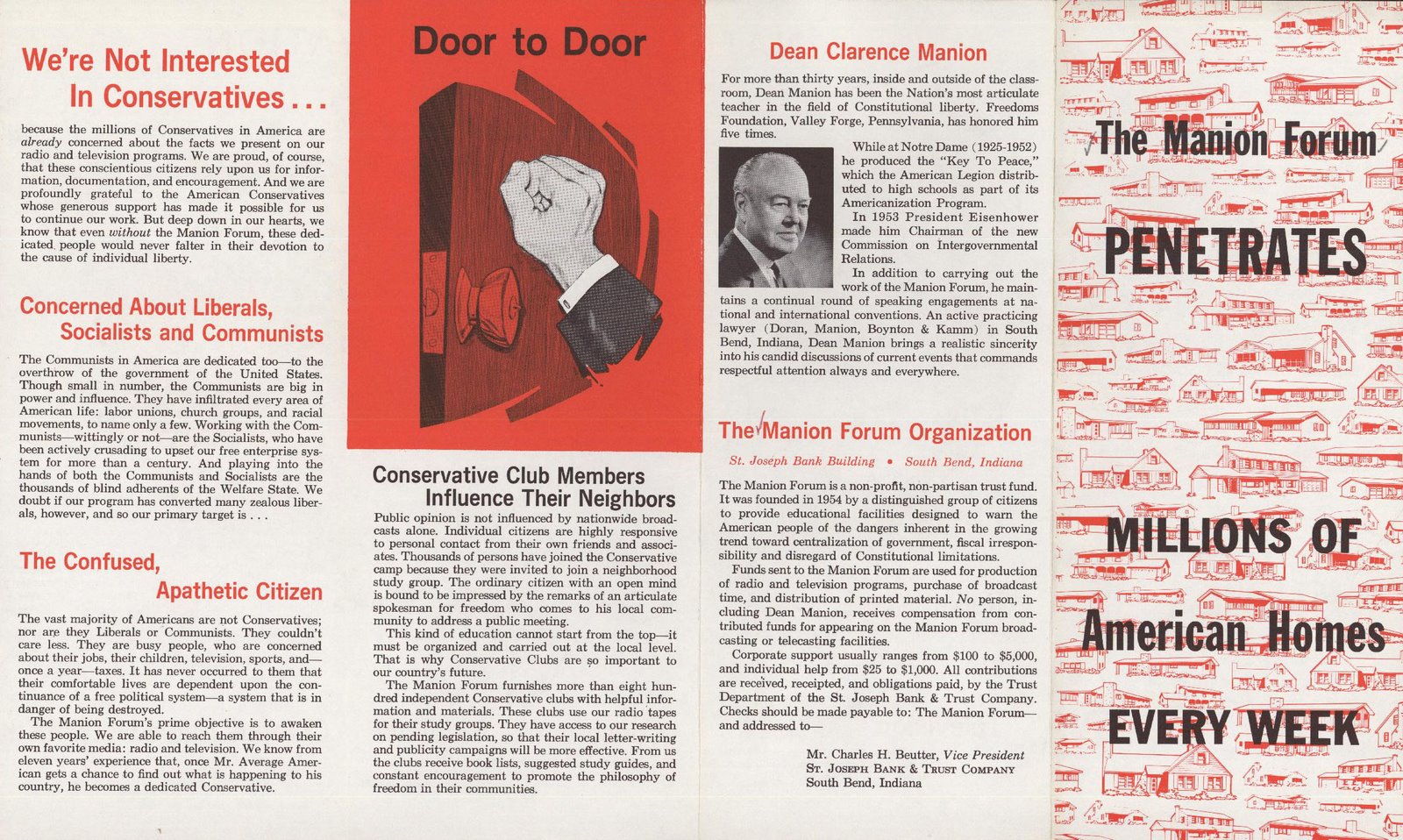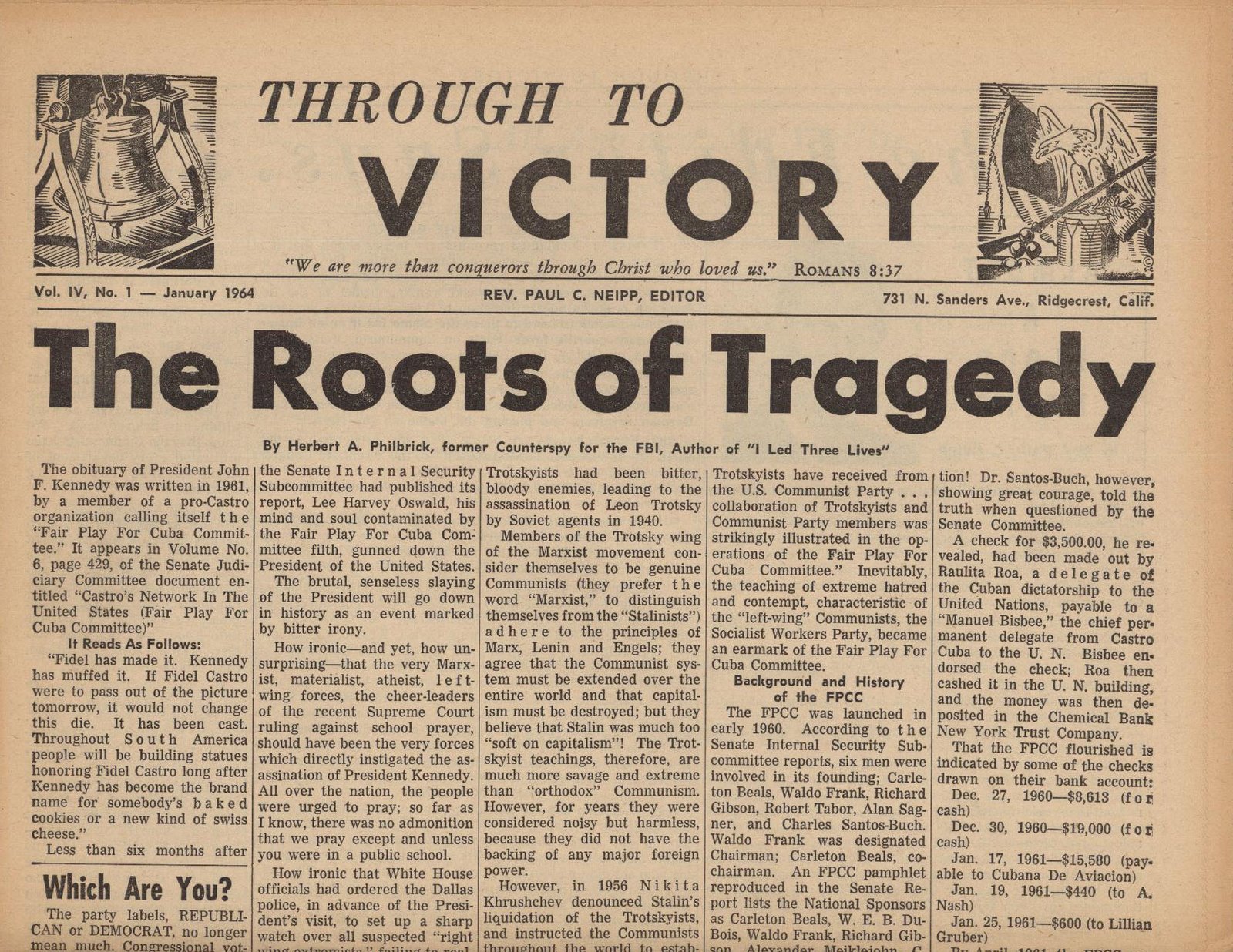Hall-Hoag Collection of Extremist Literature in the United States
November 17, 2020
Description by Katie Hargrave, graduate student in Cultural Production

 In a Boston Globe article from May 7, 1967, independent collector, archivist and researcher Gordon Hall is quoted: "What I do is essentially engage them eyeball to eyeball. Confrontation on a daily basis. No one else does it." [1] Hall was speaking of his interactions with the extreme left- and right-wing groups whose materials he painstakingly collected for the better part of his life.
In a Boston Globe article from May 7, 1967, independent collector, archivist and researcher Gordon Hall is quoted: "What I do is essentially engage them eyeball to eyeball. Confrontation on a daily basis. No one else does it." [1] Hall was speaking of his interactions with the extreme left- and right-wing groups whose materials he painstakingly collected for the better part of his life.
A portion of these materials is among the Hall-Hoag Collection of Extremist Literature in the United States held by the Brandeis Special Collections Department. This summer, I had the pleasure of spending dozens of hours combing through Hall's collection of over 5,000 objects, performing minor preservation work on the materials and creating a digital finding aid to the collection. Presented here are a few of the interesting finds from the 42 linear feet of materials.
Gordon Hall was an American soldier in the Pacific theater of World War II. During his time in service, he was introduced to many left-wing political ideas while fighting against the fascist ideology that would later come to resemble some of the writings of right-wing groups in America. Though he never finished high school, his studious nature made him curious about both sides of the political and religious coin, and his investigations into the history and aims of political organizations began. In the same Boston Globe article he wrote: "communism is bad, but this [anti-Semitism and racism] are just as bad. As far as I can see, there are two extremes worth fighting and I guess that's what I really want to do." [2] The materials in the collection date from the late 1940s through the early 1980s. Together, they act as a barometer of the political climate during the postwar period.

 As with all archival collections, the materials tell us as much about their time as they do about our own moment. Such materials as the Manion Forum Organization brochure demonstrate the importance of the media and street organizing in creating a movement. Not unlike the campaigning in this most recent presidential election cycle by thousands of volunteers, the tools of the Manion Forum Organization, a conservative club "concerned about liberals, socialists and communists," were radio and television advertisements, the distribution of printed materials and door-to-door volunteers. The brochure's graphics of countless modest homes are paired with the caption: "The Manion Forum Penetrates Millions of American Homes Every Week." The map on the opposite side shows the potential reach of radio, television, conservative clubs and campus radio networks across the U.S.
As with all archival collections, the materials tell us as much about their time as they do about our own moment. Such materials as the Manion Forum Organization brochure demonstrate the importance of the media and street organizing in creating a movement. Not unlike the campaigning in this most recent presidential election cycle by thousands of volunteers, the tools of the Manion Forum Organization, a conservative club "concerned about liberals, socialists and communists," were radio and television advertisements, the distribution of printed materials and door-to-door volunteers. The brochure's graphics of countless modest homes are paired with the caption: "The Manion Forum Penetrates Millions of American Homes Every Week." The map on the opposite side shows the potential reach of radio, television, conservative clubs and campus radio networks across the U.S.

 Similarly, the Student Voice newspaper dated Feb. 25, 1964, includes two stories that seem quite relevant in today's political climate. The paper discusses an effort coordinated by the Student Nonviolent Coordination Committee (SNCC) to register African American voters in Georgia. The effort resulted in " 'at least 100' attempts to register to vote" throughout Southwest Georgia. On the facing page, two white businessmen stand with the Atlanta NAACP president with signs of economic frugality, noting "wear old clothes this Easter" and "Easter frills or Freedom. You cannot have both now."
Similarly, the Student Voice newspaper dated Feb. 25, 1964, includes two stories that seem quite relevant in today's political climate. The paper discusses an effort coordinated by the Student Nonviolent Coordination Committee (SNCC) to register African American voters in Georgia. The effort resulted in " 'at least 100' attempts to register to vote" throughout Southwest Georgia. On the facing page, two white businessmen stand with the Atlanta NAACP president with signs of economic frugality, noting "wear old clothes this Easter" and "Easter frills or Freedom. You cannot have both now."
 The striking graphics employed by various organizations are themselves interesting. Throughout the collection, several right-wing organizations employ the well-worn Liberty Bell motif; a few of these include the Liberty Bell Press from Missouri, which investigated communist activity within the U.S.; the publication "Through to Victory," a Christian anti-communist organization; the Liberty Belles, a female-only organization interested in reining in government power and spending as well as eradicating communism, socialism and anarchism; and "The Liberty Bell," an anti-Semitic publication.
The striking graphics employed by various organizations are themselves interesting. Throughout the collection, several right-wing organizations employ the well-worn Liberty Bell motif; a few of these include the Liberty Bell Press from Missouri, which investigated communist activity within the U.S.; the publication "Through to Victory," a Christian anti-communist organization; the Liberty Belles, a female-only organization interested in reining in government power and spending as well as eradicating communism, socialism and anarchism; and "The Liberty Bell," an anti-Semitic publication.
 Though some of the materials are independently well known, like the Weather Underground publication "Prairie Fire," together this collection is an invaluable gathering of materials relating to extremist movements within the United States. Several are shocking, and all are sectarian. This cursory glance does little justice to the breadth of the collection; more materials were on view at the Archives and Special Collections Show and Tell event on March 5, 2009. For more information, please contact the Robert D. Farber University Archives and Special Collections Department.
Though some of the materials are independently well known, like the Weather Underground publication "Prairie Fire," together this collection is an invaluable gathering of materials relating to extremist movements within the United States. Several are shocking, and all are sectarian. This cursory glance does little justice to the breadth of the collection; more materials were on view at the Archives and Special Collections Show and Tell event on March 5, 2009. For more information, please contact the Robert D. Farber University Archives and Special Collections Department.



